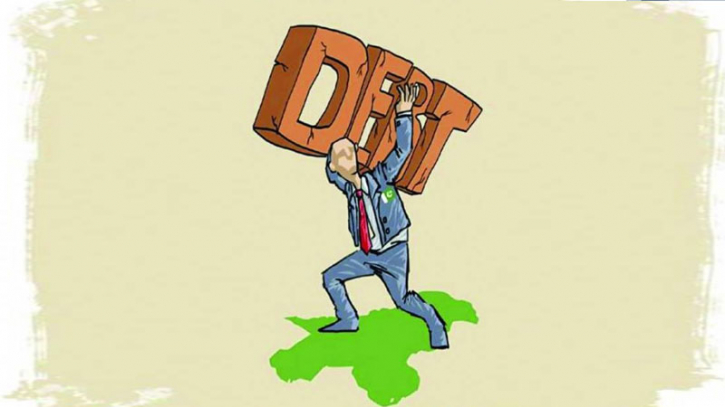Pak debt burden surges to record high of Rs81.2tn

Pakistan’s total debt and liabilities have peaked at Rs81.2 trillion – a figure that grew at a faster pace of over 27 per cent during 2023, posing emergent management challenges to the newly elected government.
The bulletin released by the State Bank of Pakistan (SBP) on Monday showed that the country’s total debt and liabilities increased by another Rs17.4 trillion as of the end of December compared to the previous year.
The total debt and liabilities now stand at Rs81.2 trillion, including Rs4.6 trillion in liabilities. The government accumulated debt at a rate of 27.2%, averaging Rs48 billion per day since December 2022. This is one of the highest monthly increases in public debt, which includes five months of the caretaker government.
Managing public debt and the growing cost of interest payments will be one of the paramount challenges for the newly elected government and may require tough decisions. However, a visibly weak coalition government may find such choices hard, particularly when there are ideological differences among potential coalition partners.
The Ministry of Finance’s latest Fiscal Policy Statement 2024 also showed a sharp rise in the debt burden during the fiscal year 2022-23, which was the year when the Pakistan Democratic Movement ruled Pakistan.
The debt burden of every citizen jumped by 25.2% to Rs271,624 by the end of the previous fiscal year. In absolute terms, every person’s debt burden increased by Rs54,500 within one year, according to the statement.
The SBP debt bulletin showed that the country paid Rs4.4 trillion in just interest costs during the first half of this fiscal year, which was Rs1.7 trillion or two-thirds higher than the same period of the last fiscal year.
The cost of servicing the debt cannot be diminished until the central bank reduces the key policy rate and the government negotiates with commercial banks for a reduction.
However, the party manifestos of the PPP and the PML-N do not offer any solution to the growing debt burden, except betting on a reduction in interest rates to reduce the annual debt cost. But any such reduction would be offset by the new amount of debt that the government will have to take to remain afloat.
The gross public debt, which falls under the direct responsibility of the finance ministry, totalled Rs67.3 trillion by the end of December, according to SBP data. There was also an increase of Rs14.5 trillion or 27.4% in gross public debt in one year.
In the previous fiscal year, the federal budget deficit soared to a record Rs6.7 trillion, attributed to the expansionary and politically motivated fiscal policies of the PDM government. The surge in public debt exceeded the budget deficit, indicating the impact of currency devaluation.
During their respective five-year terms, the PML-N added approximately Rs10 trillion, the PPP Rs8 trillion, and the PTI alone accumulated over Rs19 trillion in public debt.
The burden will persist until significant reforms are initiated, including reviews of provincial projects, winding up of ministries operating in areas now under provincial control, and addressing debt expenses.
The main reasons behind the surge in public debt remain lower-than-targeted tax collection, steep currency devaluation, higher interest rates, increased expenditures, losses by state-owned companies, and mismanagement of debt. Public Sector Enterprises’ debt and liabilities reached Rs3.9 trillion by the end of December, surging by one-fifth and reflecting uncontrolled losses by these enterprises. No government has taken steps to reform state-owned enterprises.
Political appointees fill the boards of these SOEs, including interim Finance Minister Dr Shamshad Akhtar, who sits on the boards of the Pakistan Stock Exchange and Sui Southern Gas Company Limited. The Auditor General Pakistan has framed an audit objection over the unknown amounts of board fees paid to the officers of the finance ministry sitting on 60 such boards.
The SBP data showed that the average exchange rate at the end of December was Rs281.9, depreciating by 264.4%, significantly impacting the government’s external debt. The external debt also increased 26% to reach Rs33.6 trillion within a year, with a net increase of Rs7 trillion, primarily due to currency depreciation and foreign currency reserve building through borrowing.
The country’s debt from the IMF grew by 30% to reach Rs2.14 trillion by the end of December, according to the SBP.
.png)




